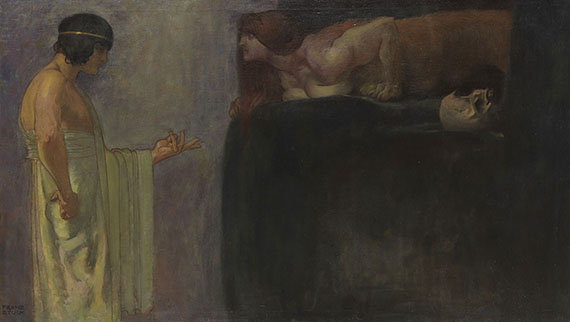Dictionary


Roman High Baroque
Rome, which alongside Bologna was already a centre of early baroque art, remained the capital of art during the high baroque period. This was partly due to the presence of the papal sponsor, who used art to represent sacred and profane claims to power. Giovanni Lanfranco (1582-1647), from the Bolognese Academy, removed himself from this dominant school in Rome, and executed bold, illusionist ceiling paintings, such as those in the Casino Borghese, which illustrated the transition from Carracci school mannerism to Piertro da Cortona’s high baroque art. Cortona (Pietro Berrettini, called da Cortona, (1596-1669) was a successful architect and painter, and represented the dynamic, swirling, and ornament-rich style of the blossoming Roman high baroque. His main works were the ceiling paintings in Palazzo Barberini, which were commissioned by Pope Urban VIII, an important patron of the period.
Pietro da Cortona’s work was not only influential in Italy, but also in the whole of Europe, until the transition into the late baroque era at the end of the century.
Alessandro Algardi’s (1598-1654) sculpture represented the strict style of the Bolognese school. François Duquesnoy executed works in a tranquil Hellenistic style. Both sculptors worked in the classical baroque style, which contrasted with Gianlorenzo Bernini’s (1598-1680) high baroque oeuvre. Bernini’s early works, such as his Borghese sculptures, displayed a dynamic and richly surfaced style. He also became a highly successful architect, and subtly introduced the surrounding architecture into his sculptural work.
Bernini thus created emotionally staged Gesamtkunstwerke, such as "The Ecstasy of Saint Theresa" in S. Maria della Vittoria. His portrait busts were characterised by a refreshing naturalism, like those of Costanza Bonarelli. Roman high baroque sculpture was shaped and dominated by Bernini and his numerous followers, the so-called "Berniniani".
Rome, which alongside Bologna was already a centre of early baroque art, remained the capital of art during the high baroque period. This was partly due to the presence of the papal sponsor, who used art to represent sacred and profane claims to power. Giovanni Lanfranco (1582-1647), from the Bolognese Academy, removed himself from this dominant school in Rome, and executed bold, illusionist ceiling paintings, such as those in the Casino Borghese, which illustrated the transition from Carracci school mannerism to Piertro da Cortona’s high baroque art. Cortona (Pietro Berrettini, called da Cortona, (1596-1669) was a successful architect and painter, and represented the dynamic, swirling, and ornament-rich style of the blossoming Roman high baroque. His main works were the ceiling paintings in Palazzo Barberini, which were commissioned by Pope Urban VIII, an important patron of the period.
Pietro da Cortona’s work was not only influential in Italy, but also in the whole of Europe, until the transition into the late baroque era at the end of the century.
Alessandro Algardi’s (1598-1654) sculpture represented the strict style of the Bolognese school. François Duquesnoy executed works in a tranquil Hellenistic style. Both sculptors worked in the classical baroque style, which contrasted with Gianlorenzo Bernini’s (1598-1680) high baroque oeuvre. Bernini’s early works, such as his Borghese sculptures, displayed a dynamic and richly surfaced style. He also became a highly successful architect, and subtly introduced the surrounding architecture into his sculptural work.
Bernini thus created emotionally staged Gesamtkunstwerke, such as "The Ecstasy of Saint Theresa" in S. Maria della Vittoria. His portrait busts were characterised by a refreshing naturalism, like those of Costanza Bonarelli. Roman high baroque sculpture was shaped and dominated by Bernini and his numerous followers, the so-called "Berniniani".
Offers
Headquarters
Joseph-Wild-Str. 18
81829 Munich
Phone: +49 89 55 244-0
Fax: +49 89 55 244-177
info@kettererkunst.de
Louisa von Saucken / Undine Schleifer
Holstenwall 5
20355 Hamburg
Phone: +49 40 37 49 61-0
Fax: +49 40 37 49 61-66
infohamburg@kettererkunst.de
Dr. Simone Wiechers / Nane Schlage
Fasanenstr. 70
10719 Berlin
Phone: +49 30 88 67 53-63
Fax: +49 30 88 67 56-43
infoberlin@kettererkunst.de
Cordula Lichtenberg
Gertrudenstraße 24-28
50667 Cologne
Phone: +49 221 510 908-15
infokoeln@kettererkunst.de
Hessen
Rhineland-Palatinate
Miriam Heß
Phone: +49 62 21 58 80-038
Fax: +49 62 21 58 80-595
infoheidelberg@kettererkunst.de
We will inform you in time.




